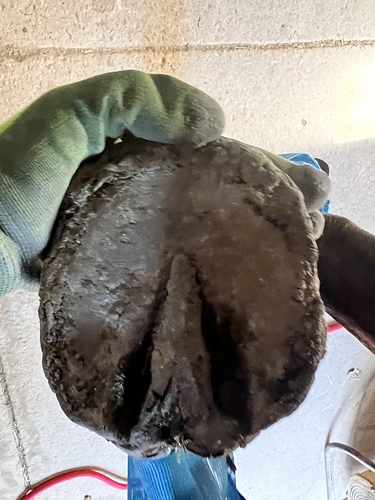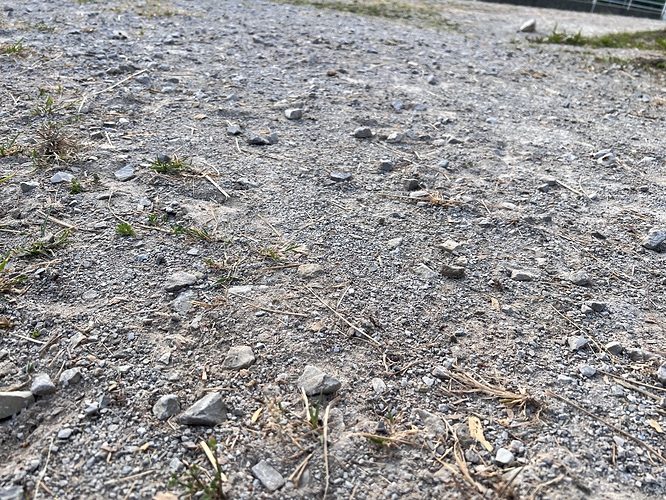I think I’m going to swallow my nerves, take some Advil and just start rasping a little at a time in the short term while I look for someone else. The tricky part is that I have a second horse with a significant club and whacky legs that is definitely not rookie trimmer material. But I suppose it can’t hurt that one to just keep him trimmed in the short term while I try to look for someone that might get it.
His feet are changing pretty rapidly now that they are out of the shoes and I think this latest approach to the thrush is clearing up nicely.
He’s walking sounder already. Only the big booger (larger sharp gravel) rocks are getting him at this point.
I’m sure I can do this if I can have him stand in small doses. I can’t put a hoof between my legs, not with my back, but it’s an opportunity to have him learn to be a bit more patient with the whole idea. He’s already better with me handling his feet for longer so I think they do hurt less.
Initially when I started squirting the grooms hand in he’d yank the foot pretty quickly. And this is a horse that offers his feet to be picked out, so it isn’t a general “unwillingness”.
Today he let me treat both in a very leisurely fashion, offering up his hooves for me, while loose in the paddock.



 . My horses feet do fine without boots but damned, it is so hard and dry, she would definitely wear more than she grows if I didn’t boot her for work. I think protection is a good thing and we ended up with boots because she was such a bi*#& to shoe (17 years ago…the last time she had shoes on). She might be better now but I don’t mind fussing with boots every day (6-8 months of the year…we eventually get some rain) and having control of her feet however often I might need to tweak something.
. My horses feet do fine without boots but damned, it is so hard and dry, she would definitely wear more than she grows if I didn’t boot her for work. I think protection is a good thing and we ended up with boots because she was such a bi*#& to shoe (17 years ago…the last time she had shoes on). She might be better now but I don’t mind fussing with boots every day (6-8 months of the year…we eventually get some rain) and having control of her feet however often I might need to tweak something.